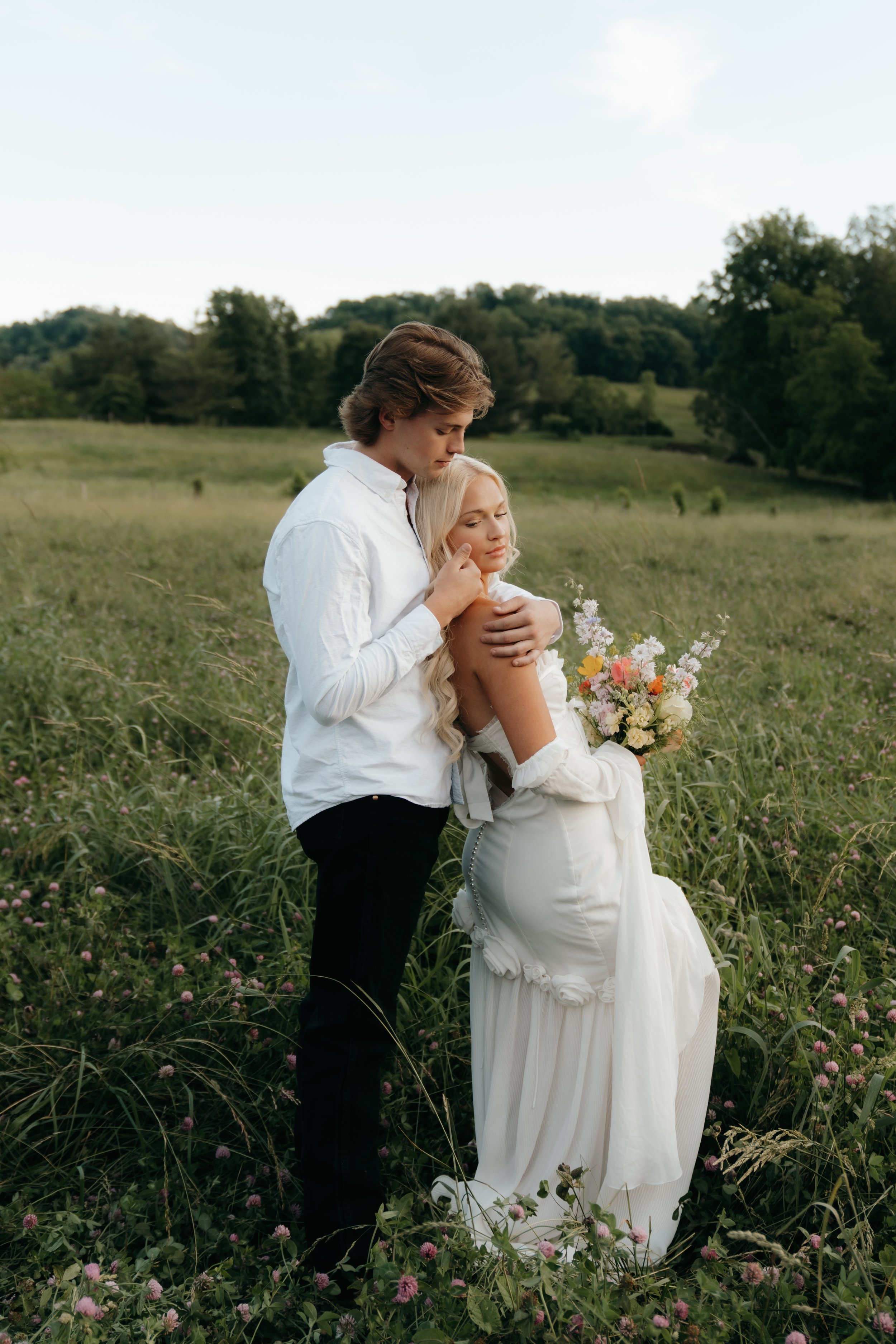Top 6 tips to book your dream wedding florist
Whether you know you’ve found your dream floral designer…
…or you’re still learning what your dream florist needs to be…
…these top tips will help you feel confident going forward.
And hey, you’ve never planned a wedding before, friend. So, give yourself some grace, take a deep breath, and know that you’ve got people rooting for you!
Let’s dive in!
Photograph by AJ Photography
Tip #1: Have your budget maximum, or budget range, decided before you reach out. Instead of learning what various designs cost and deciding your budget based on which ones you want, it behooves your future finances to choose the budget first and then trust your floral designer to get you the most bang for your buck. Your floral designer will be an expert on optimizing and maximizing your flowers to take your vision for beautiful blooms and elevate it times 1,000. In order to do that, first they’ll have to know what resources are available to make the magic happen, which starts with the budget and what flowers are in season. Some florists may have a minimum order requirement. This is a decision unique to every small business floral designer, though, so there is no right or wrong answer when it comes to that value. It depends on what the wholesale market is, what overhead costs are necessary to maintain their design space, how many employees they’ll need to pay to cover the labor, etc.
Photograph by Presley Castle Photography
Tip #2: Thoroughly look through your floral designer’s portfolio. If some of their past work speaks to you more than others, that will be very helpful during your consultation. Do they tell you in which month the photos were taken? You’ll be less surprised with substitutions or alternative flowers if you have a good idea of when your favorites bloom and when your florist has access to them. Check out my Bloom Times Guide to see when popular favorites are blooming right here in East Tennessee.
Photograph by Sam Bond Photography
Tip #3: Be aware of their timeline for getting the flowers for your big day. Some designers may not feel the need to communicate about your order until a month before your event. Others may feel it works best to check in regularly up until wedding day. Some floral designers may not be able to set up at your ceremony 6 hours before you walk down the aisle, while a different proposal may require an early setup time.
Photograph by Sara Cassidy Photography
Tip #4: Read your contract thoroughly before signing. The purpose of your wedding flowers contract is to protect both parties from misunderstandings. It’s a formal agreement between the both of you to determine how you want to do business. Your contract should at a bare minimum cover your agreement for which services will be provided, what will happen the day of the wedding, and what will happen if any part of the plan changes.
Photograph by AJ Photography
Tip #5: When inquiring about their services, be OK with getting a “no.” Is it uncomfortable and does it feel like rejection? Sometimes, yes. But it’s not. You’re no worse off than before you asked.
Your floral designer wants to make sure they can execute your vision before they agree to being your perfect match.
They want you to win!
Be honest about the details of your event and what you’re looking for, and you’ll both be more likely to part ways fondly reminiscing about your wedding day.
Photograph by Hannah Murray Photography
Tip #6: Flower flexibility leads to greater happiness. You’ve found the one! The one floral designer, that is, whose work takes your breath away. You daydream about what it will feel like to be surrounded by flowers like that for your big day.
Be wary of putting too much detail into those daydreams, though. Most flowers bloom in about a 4-week window of time each year. Some may bloom in Spring, go to seed, and bloom again before frost on new plants. Some plants will bloom for 8 weeks, but put out smaller or shorter stems during those last weeks. Some flowers may put out one bloom on the entire plant (looking at you, tulips) and then be done for the year. Excess rain, drought, high winds, hail, pest pressure, fungal disease, you name it, also play into the availability of flowers.
And if your florist is purchasing imported flowers for your event, there is the added risk of overseas transport and local shipping that could alter what flowers are available. Some varieties of flowers will have been harvested over a week before they ever reach your floral designer’s hands. Shipping is not always the kindest to those flowers and they might not arrive in a condition that your designer deems worthy of display. Shipping containers may be delayed, coolers could lose power, the list goes on.
The more flexible you are with which flowers are used in your designs, the less likely it is that your floral designer will disappoint you. Nervous that being flexible with flower choice will lead your designer to select cheaper varieties that don’t give the same feeling so they can maximize profits? (Well, if you weren’t before, you are now! Sorry for the nightmare fuel) Just make sure you’ve followed Tip #2 and combine that with asking them what’s in season for your wedding date. Also, if “cheap” is the vibe your florist is putting out, maybe go with a different one whose values more closely match your own.
Photograph by Presley Castle Photography
Cheers to stress-free wedding flowers,
Sara








